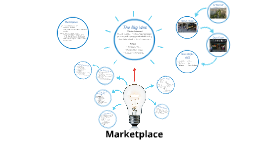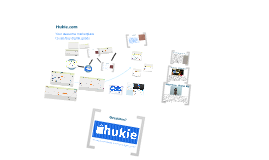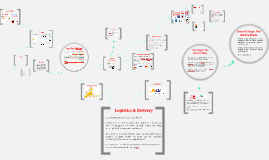marketplace
Transcript: The Beach Box our learning center Amaïa Pelletier & Bella Bulhoes MATERIALS: INTRODUCTION -clear bin, with a nearby big mirror -lots of sand -natural elements: shells, driftwood, rocks, coral, some animals, seaweed, feathers -artificial elements: plastic straws/bottle caps, broken pieces of glass (sea-glass and dulled), empty tubes of sunscreen/sunglasses, food wrappers -Tools:magnifying glasses, rulers, tweezers, paintbrushes, shovels -Journal: to be used for science, art, and literacy activities -Art supplies: markers, photos, newspaper cutouts, pictures of the sea and its inhabitants, glue, scissors -Wall Decorations: animals posters, maps, diagrams of the ocean/beach, posters on ocean conservation, students made art (to be created during the lesson) - Picture Cards- of ocean animals and beach materials - Books: 1. The Seaside Switch (Kathleen V. Kudlinski) 2. At the Beach (Ann and Harlow Rockewell) 3. What Lives in a Shell? (Kathleen Weidner Zoehfelel) 4. All the Way to the Ocean (Joel Harper) 5. Save the Ocean (Bethany Stahl) 6. Baby Honu’s Incredible Journey (Tammy Yee) 7. One Tiny Turtle (Nicoal Davies) RATIONALE Our rationale behind our learning center RATIONALE This learning center is an extension of our unit on the ocean and its animals. The children will have many opportunities to discover and play with the many different elements of the center through the framework of several different lessons. We intend to focus on each of the subject areas while still maintaining a student-centered approach (according to the Reggio-Emilia methodology of early childhood education). Additionally, we feel that our center allows for many opportunities of structured learning, but also an equal amount of unstructured play, which is deemed necessary by Kostelnik et al. (2019). Through these activities, we hope to not only just accomplish our objectives, but to also engage each student's individual intelligence and learning style to create meaningful, long-lasting learning. CLASSROOM MANAGEMENT CLASSROOM MANAGEMENT Because our center has so many opportunities for engagement, it is important that we set up guidelines and regulations to ensure the center remains clean and an effective place to learn. To regulate the number of children that will attend the station, we will only provide 4 chairs, as well as 4 of each tool (magnifying glass, ruler, etc.). To ensure that things are being put away properly, we will have bins with picture labels to aid students in their organizational skills. The books will be placed neatly on a shelf at student eye level, and students will be held accountable to re-shelve any books that they may use throughout the course of the activity Finally, to ensure that students are taking responsibility for their journals, we will have them write their names on them as well as glue their picture to the cover, to avoid any confusion. The journals will then in turn be placed in a bin in alphabetical order according to the students number so that they may practice their alphabetizing and organizational skills. QEP Competencies ACTIVITY 1: Beach Defender Journal Science Reggio Emilia: Science Activity 1 Materials highlighted: students' journals, the beach box (with natural/artificial elements), tools, writing/art supplies Activity: The students will begin their investigation of the beach box by simply exploring and classifying the elements. They (in groups of 4) will spend 10-15 minutes discovering the elements and classifying them in their journals into their own self-made categories (natural/artificial elements, size, shape, color, etc.). The students will practice their science skills of observing and classifying and will also practice math skills such as counting. QEP COMPETENCIES This activity will draw on several of the QEP competencies including: - Children will develop fine motor/ sensory skills will be developed - Children will gain an awareness and appreciation of the natural world around them - Children will be introduced or made comfortable with the concept of sustainability REGGIO EMILIA ELEMENTS This activity draws on several principles of the Reggio Emilia methodology, specifically in that the children are viewed masters of their own learning. The students will be the ones deciding the classification criteria here, giving them the freedom to explore the elements according to their observations. Additionally, the physical space will include Reggio elements such as the natural elements of the beach box and the large mirrors (to encourage observation through a different perspective). Math Activity #1: Making Patterns Math Activity 1 Materials: picture cards of sea creatures REGGIO EMILIA This activity is focused on student's math skills: students will be in charge of creating their own logical patterns, thanks to the picture cards (of beach elements) provided. QEP COMPETENCIES/OBJECTITIVES QEP COMPETENCIES Cross-Curricular Competency: to perform sensorimotor actions in different contexts REGGIO

















